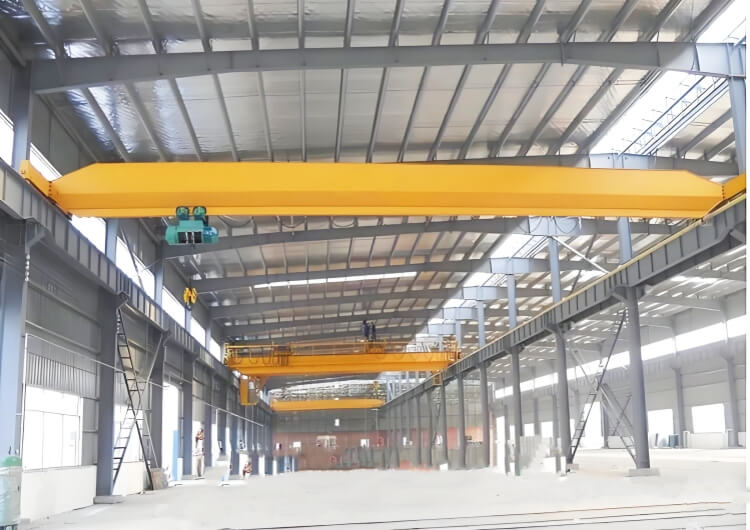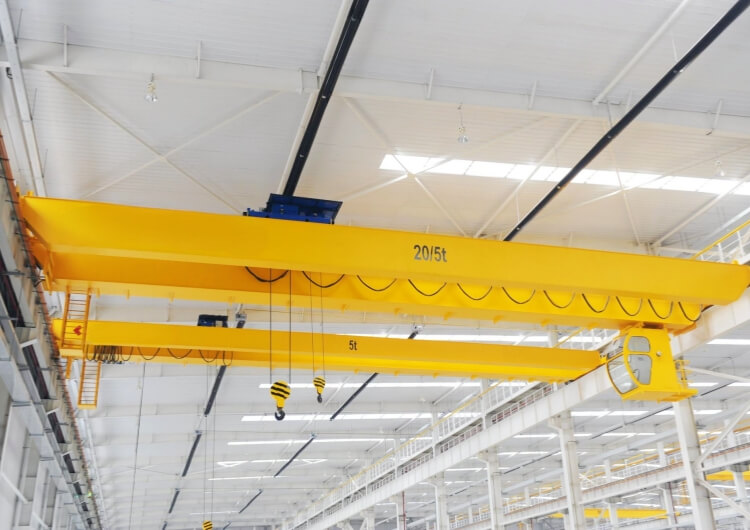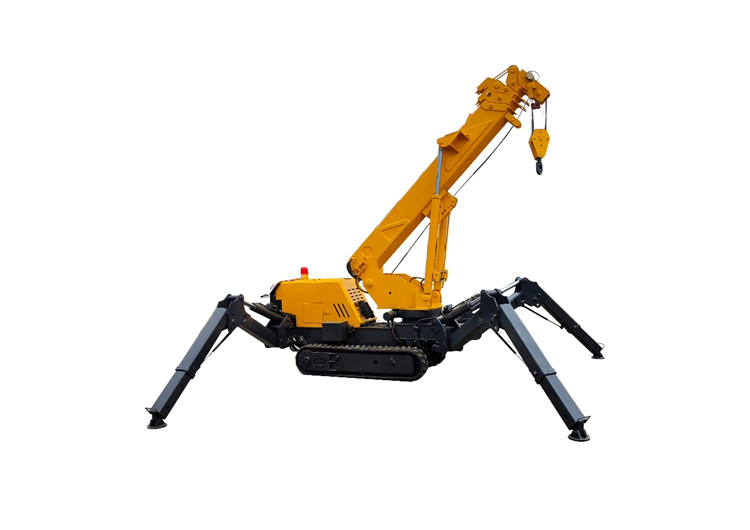Gantry Cranes for Ports, Shipyards & Factories | SLKJCrane Global Supplier
This article takes a detailed look at gantry cranes.
You will learn more about topics such as:
- What is a gantry crane?
- Types of gantry cranes
- How gantry cranes are made
- Uses for gantry cranes
- And much more …
What is a Gantry Crane?
A gantry crane is a type of lifting equipment distinguished by its large, gate-shaped structure, which resembles a massive doorway when viewed from a distance—hence the name. It typically consists of a main beam, supporting legs, lower crossbeam, hoisting trolley, crane traveling mechanism, and electrical systems. Gantry cranes are widely used in ports and harbors, shipbuilding, subway construction, hydropower projects, aerospace manufacturing, warehousing and logistics, and building construction. As an essential material handling tool in modern industry, a gantry crane significantly reduces manual labor intensity, enabling mechanized and automated lifting operations. This not only improves workplace safety but also boosts operational efficiency, making it an indispensable solution for heavy-duty and large-scale material handling needs.
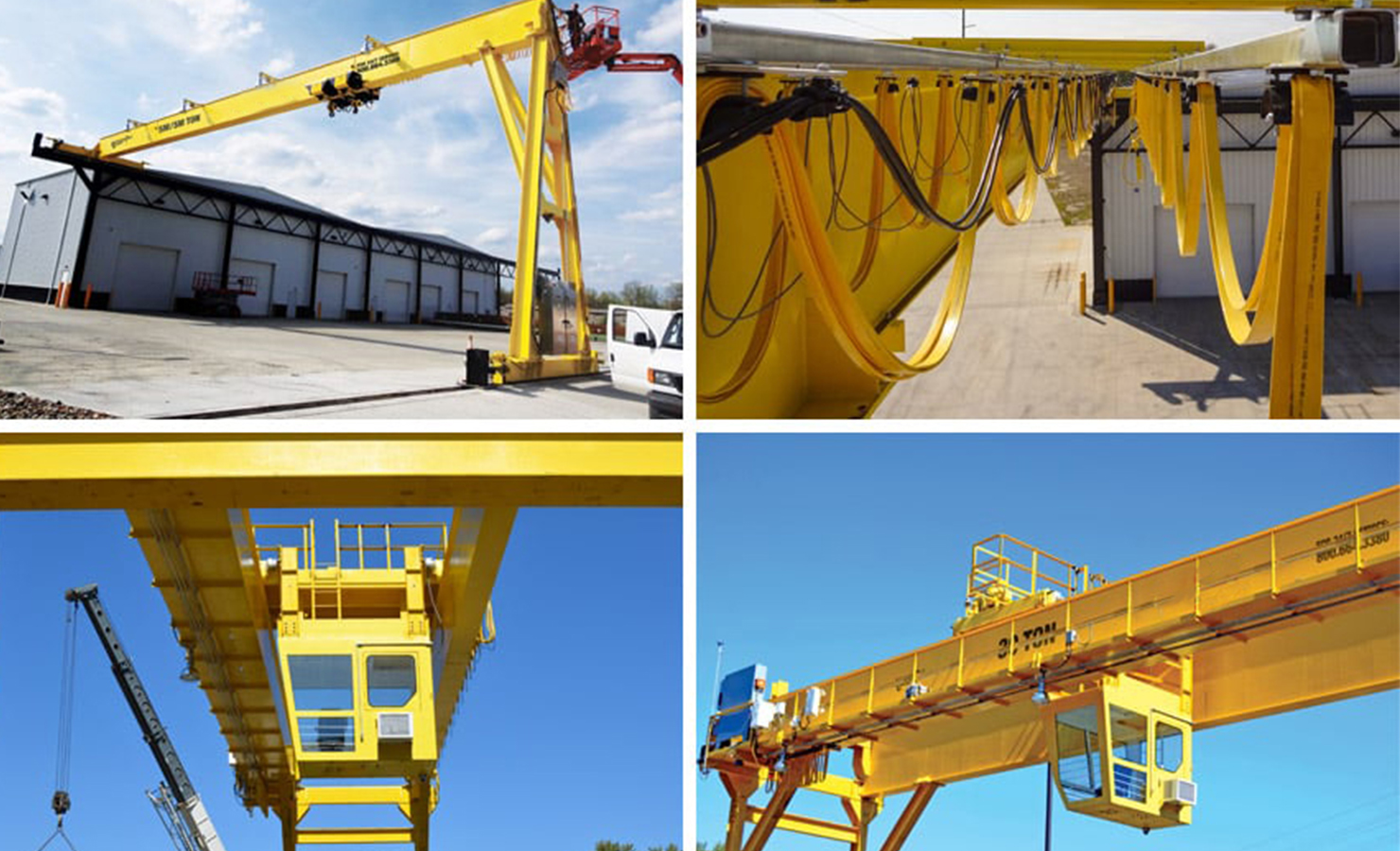
Why Gantry Cranes Are Essential for Modern Material Handling
The demands of today’s industries In production—speed, precision, and safety—have never been higher. Moving oversized, heavy, or irregularly shaped loads with forklifts or manual labor is not only inefficient but also risky. Gantry cranes solve these problems with:
High Lifting Capacity – Capable of handling anything from a few tons to several hundred tons.
The Flexibility Of Design – The span, height, type of lifting attachment, and operating speed of each mechanism can all be customized according to specific requirements.
Productivity Gains – Reduces downtime, speeds up operations, and enhance productivity.
Main Types of Gantry Cranes
SLKJCrane offers multiple gantry crane configurations type to meet diverse customer requirements:
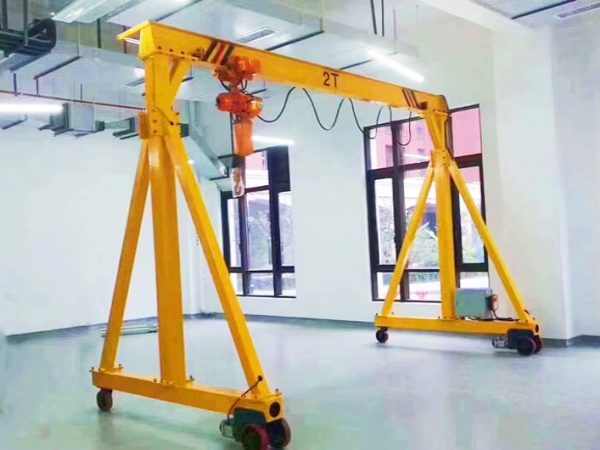
Portable Gantry Crane:Lightweight and flexible, it is suitable for light hoisting tasks in workshops or construction sites
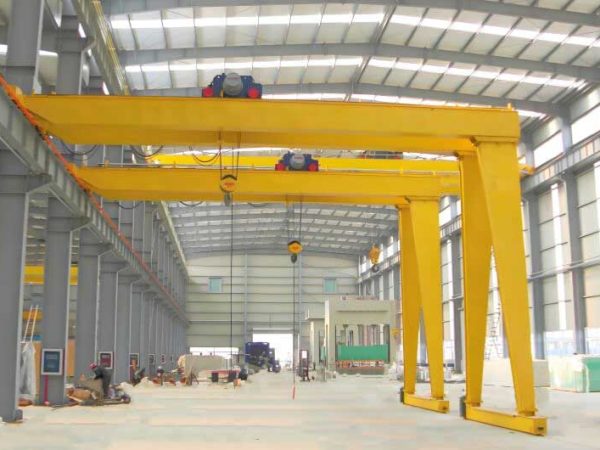
Semi Gantry Crane:One leg runs on a rail, the other supported by an elevated structure, saving floor space.
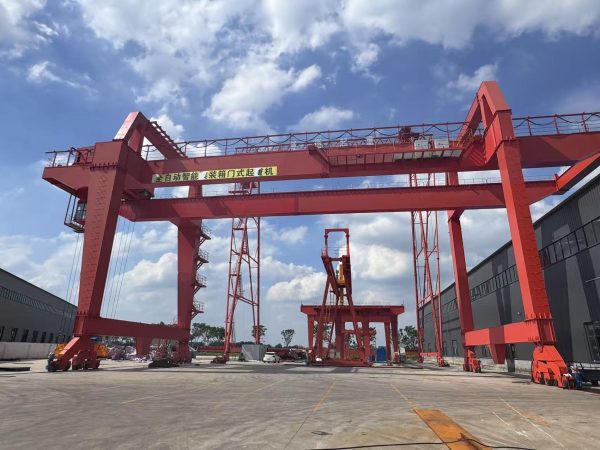
Full Gantry Crane:The four outriggers run on the track, making it more suitable for large scale outdoor operations

Shipyard Gantry Crane:It is a kind of super-large tonnage, span and lift special gantry crane for shipbuilding, specifically used for the construction, maintenance and repair of shipbuilding and Marine engineering structures.
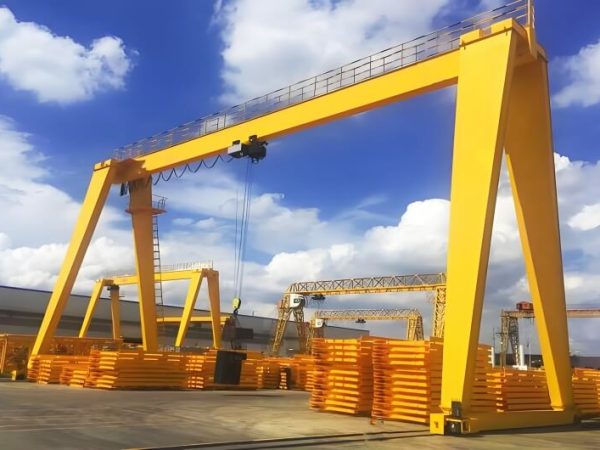
Single Girder Gantry Crane:Simple structure, cost-effective, suitable for light to medium loads.
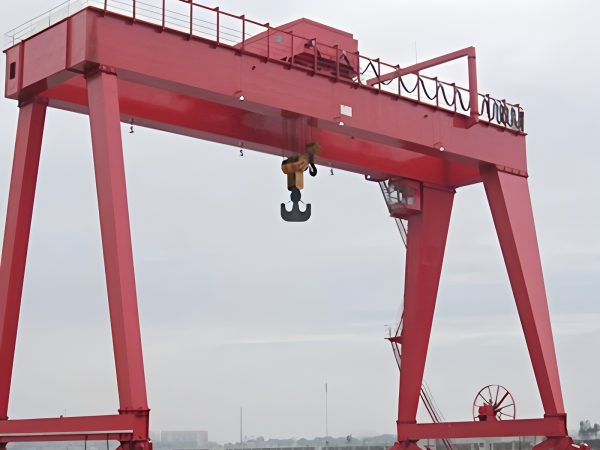
Double Girder Gantry Crane:One leg runs on a rail, the other supported by an elevated structure, saving floor space.
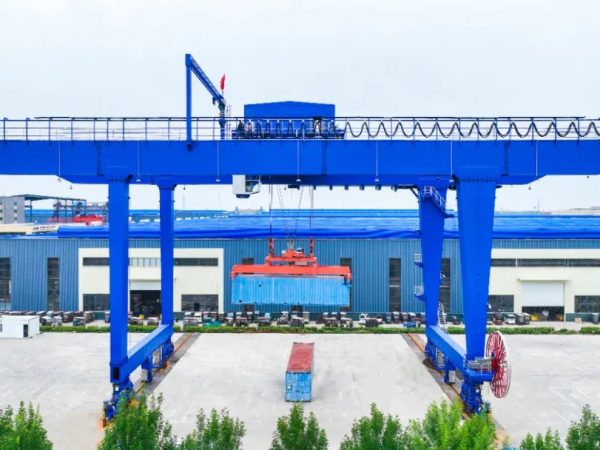
Rail Mounted Gantry (RMG) Crane– Common in container terminals and rail yards, further classified into:
Container RMG – It is suitable for stacking goods and handling containers on fixed tracks at fixed sites
Bulk Material RMG – It is used for hoisting large goods such as wind turbine blades and precast concrete in the wind power industry
Specialized RMG – It is wind turbine blades, precast concrete segments, etc.
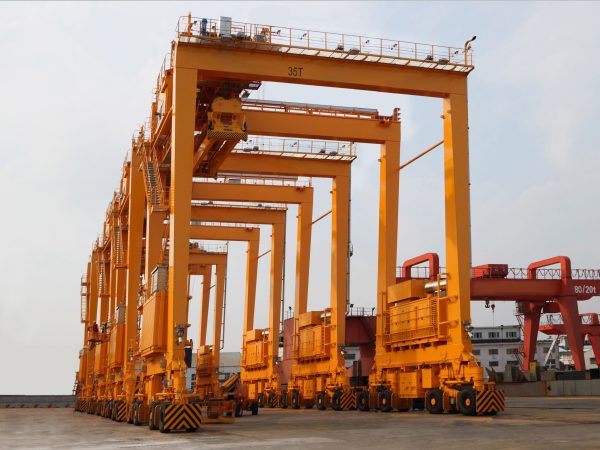
Rubber Tired Gantry (RTG) Crane:Highly mobile container handling cranes without fixed rails.
Industry Applications and Benefits
Gantry cranes are versatile and widely used in multiple sectors:
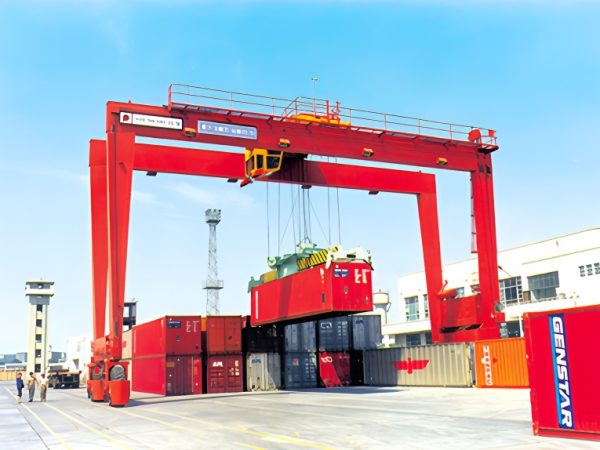
Ports & Container Terminals
Efficient container stacking and vessel loading/unloading, reducing vessel turnaround time.
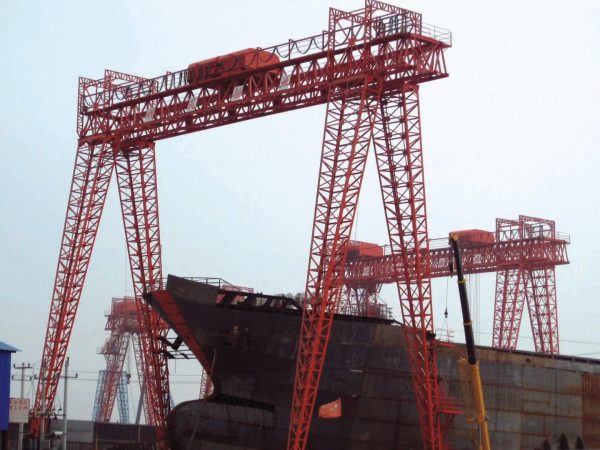
Shipyards
Lifting ship sections, propellers, and marine engines.
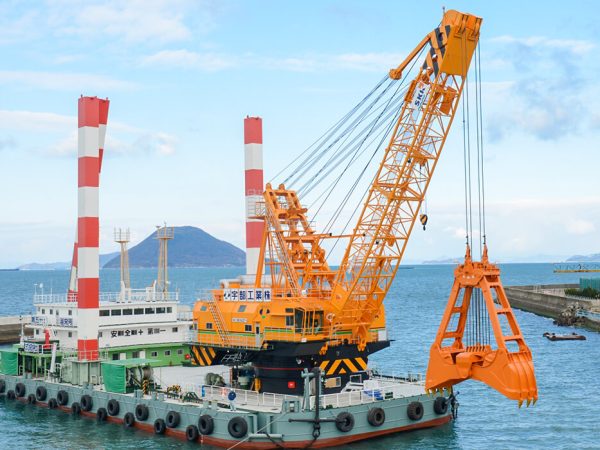
Logistics & Freight Yards
Handling containers, heavy pallets, and specialized cargo.
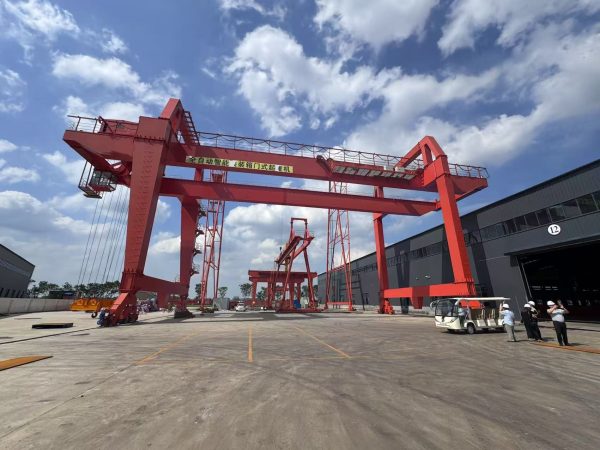
Manufacturing
Moving heavy machinery, molds, and assembly components.
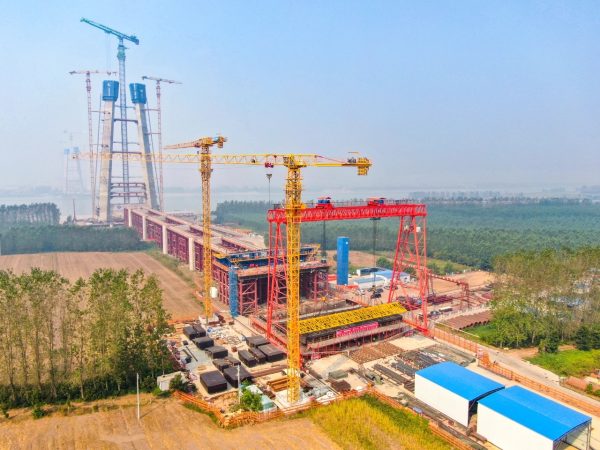
Construction
Lifting steel structures, precast concrete, and large equipment.
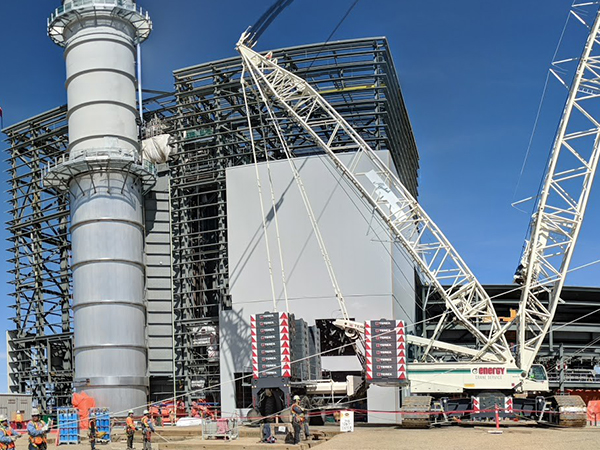
Energy & Infrastructure
Install large generator units and complete the transportation of large Bridges and their components in the girder yard, etc
Load Capacity & Dimensional Reference
| Application Area | Typical Capacity Range | Common Span | Notes |
|---|---|---|---|
| Workshop / Light Manufacturing | 1 – 10 tons | 7.5 – 22.5 m | Single girder, portable options available |
| Medium Manufacturing / Processing | 10 – 50 tons | 12 – 35 m | Single or double girder |
| Ports & Container Handling | 40 – 70 tons | 20 – 40 m | RMG or RTG |
| Shipyards & Offshore | 100 – 900+ tons | 30 – 100+ m | Heavy-duty double girder |
| Construction / Infrastructure | 20 – 200 tons | 12 – 50 m | Often semi-gantry or mobile configurations |
SLKJCrane’s Design & Manufacturing Process
We follow strict international standards to ensure safety, performance, and durability.
1.Demand analysis
Determine the lifting capacity, span, lifting height, working level, working speed of each mechanism and other level parameters.
Working environment
2.Advanced design methods
Utilizing 3D modeling technology, structural simulation technology, and finite element analysis technology to conduct various tests on the product
3.Steel structure manufacturing
High strength steel is used, with automatic full penetration welding and anti corrosion treatment
4.Assembly and testing
Conduct full load tests, safety system inspections and certifications
5.International compliance
Conforms to multiple international standards such as ISO and CE
Global Project Highlight: Middle East Delivery
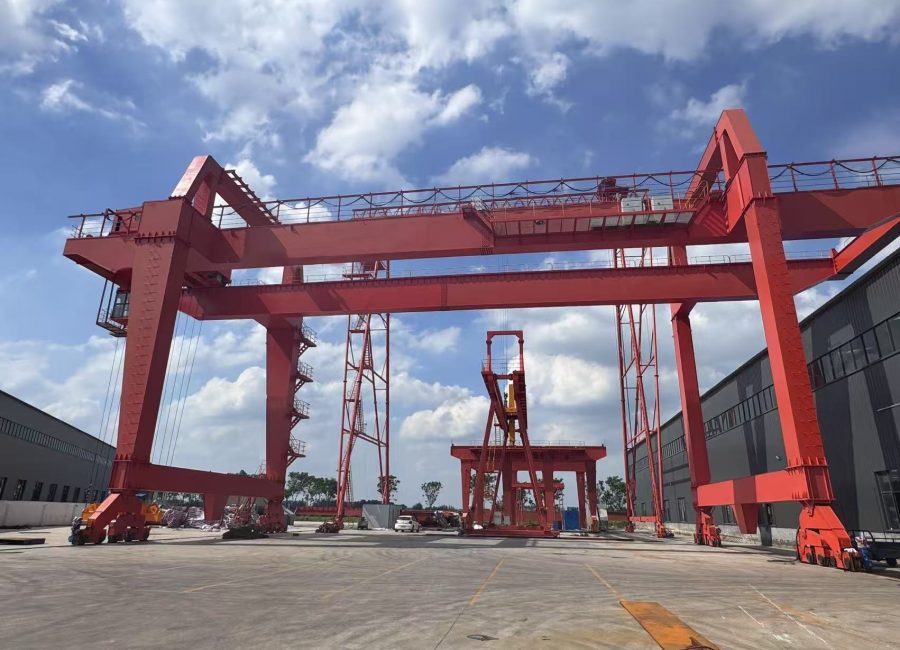
We recently delivered a 65-ton Rail-Mounted Gantry Crane to a Middle Eastern container terminal, engineered for high temperatures and dusty environments. Key features included:
Dust-proof drive and sealed electrical systems
Energy-efficient control systems to reduce operational costs
Remote monitoring for predictive maintenance
Within the first month of operation, container handling efficiency increased by 30%.
FAQ
FREQUENTLY ASKED QUESTIONS
Here are some common questions and answers about gantry cranes that may help you clear up your doubts. If not, please initiate a consultation below and let our professional technical department provide you with an answer
What is a gantry crane?
A crane where the girder is supported by legs moving on rails or wheels, suitable for indoor and outdoor lifting.
What is the difference between a gantry crane and an overhead crane?
A gantry crane uses legs to support the bridge and can run on rails or wheels placed on the ground, making it suitable for outdoor yards or areas without building support.
An overhead crane, also called a bridge crane, is supported by building columns or beams and operates along elevated runways inside a facility. Gantry cranes offer more mobility, while overhead cranes are better for permanent indoor lifting operations.
How to choose the right gantry crane capacity?
To choose the correct capacity, consider the maximum load weight you will lift, including the weight of any lifting devices such as spreader beams or grabs. Always select a capacity slightly higher than your heaviest load for safety and durability. For example, if your heaviest load is 8 tons, a 10-ton gantry crane would be a safer choice. Also factor in future expansion needs and local safety regulations.
What are the main types of gantry cranes?
Portable, semi gantry, full gantry, single girder, double girder, RMG (container, bulk, specialized), RTG, and shipbuilding gantry cranes.
What are the key components?
The main beam of the crane, the outriggers of the crane, the lower crossbeam of the crane, the hoisting trolley, the traveling mechanism of the large car, the power and control system of the crane, etc.
How are they used in different industries?
From ports to shipyards, manufacturing plants to construction sites, they handle everything from containers to massive infrastructure components.
What are the common parts for gantry cranes?
Overload limiters, lifting height limiters, brakes, brake pads, steel wires, pulleys, wheels, etc.
How are gantry cranes installed and maintained?
Installation includes site preparation, track or wheel calibration, main beam assembly, hoisting device installation and load testing. Maintenance requires lubrication, safety checks, motor and reducer testing, and control system calibration.
What certifications are needed for different regions?
Europe – CE Certification, EN Standards
Middle East – GCC Compliance, ISO, and port authority approvals
North America – OSHA, CMAA Standards
Asia – China GB, Japan JIS, India BIS Standards

The strength and professionalism of SLKJCrane
Why Choose SLKJCrane for Your Global Projects
Extensive International Experience – Projects in Asia, Europe, the Middle East, and Africa.
Tailored Solutions – Designed to match specific load, environmental, and operational requirements.
Full-Service Approach – From engineering and manufacturing to installation, training, and after-sales.
Fast Delivery & Cost Efficiency – High quality without unnecessary expense.
SLKJCRANE – It is a crane manufacturer specializing in the production of gantry cranes and overhead bridge cranes. The industry has accumulated over 20 years of experience
Contact Us Now
Have questions about our cranes or need help?
Reach out to our friendly team for expert support and guidance.
We are here to help you power your journey towards a greener future !
Address: Crane Industry Park, Xinxiang City Henan Provice


